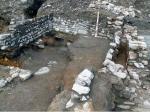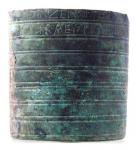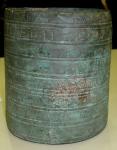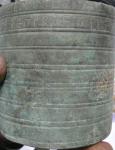Summary (English)
AUGUSTA TRAIANA – VEREYA (Dimiter Yankov – dimiter_yankov@yahoo.com) The site covered an area of 1070 sq. m, located in the western part of Augusta Traiana. In 1968 – 1972, the western fortification gate and the forum of the city were discovered to the west of the site. In 1984 – 1986, decumanus maximus and adjacent buildings were explored to the east of the site. In 2012, sectors of decumanus maximus, 6.20 – 6.30 m wide, were discovered. Two drains were built at the northern and the southern side of the street, 50 cm wide and 85 cm deep. The stone slabs of the sidewalks were placed over the drains. Stylobates, 0.80 – 1.50 m wide, were discovered from the northern and the southern side of decumanus maximus. The street was built in the second half of the 2nd century AD. A pavement of rubble was made over the street at the end of the 4th – beginning of the 5th century AD. A stratum, up to 1.80 m thick, was discovered to the south of decumanus maximus, synchronous to the first period of its functioning. Forge workshops existed here until the beginning of the 3rd century AD when a building consisting of parallel rooms arranged in a line was constructed. Four rooms of the building, constructed in opus mixtum, were discovered. The building was destroyed by a fire, dated by coins of Justin II and Sophia. Another building consisting of parallel rooms arranged in a line was discovered to the north of decumanus maximus, situated to the west of the first cardo and to the east of the thermae. The building was constructed in the beginning of the 4th century AD. Its foundation was built of stones bonded with mud and the upper part was constructed of sun-dried bricks. The building was destroyed by a fire at the end of the 6th century AD. Six sunken-floored houses and storage pits of the end of the 10th – 12th centuries were discovered. Three houses of the 17th – 19th centuries were documented as well. The finds from the excavations included over 750 coins, including two hoards consisting of 22 and 16 coins of the 5th century AD, nine bronze exagia, a gold finger-ring of the 14th century, a bronze earring of the 11th – 12th century and pottery. Of special interest was a bronze sextarium of the reign of Zeno with a Latin inscription “Our Ruler Zeno, Permanent Augustus. An exact measure made for the excellent man Sebastianus, Praefectus Praetorii and Exconsularius. Sextarium – 23 ounces of liquid”. The sextarium was made for Sebastianus, the praetorian prefect of the East that included Beroe as well.
- Dimitar Yankov - Regional Museum of History – Stara Zagora
Director
Team
Research Body
- Regional Museum of History – Stara Zagora





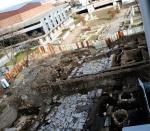
![Download [PDF]](/excavation/skins/fasti/images/results/download_sml.png)
